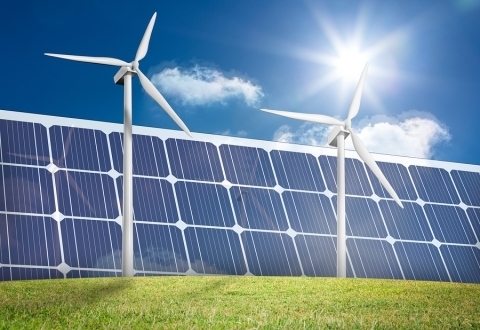Advancing Clean Energy at the State Level – An Imperative
 In the wake of President Trump’s decision to withdraw the United States from the Paris Climate Agreement, one thing seems abundantly clear, and that is that the role of states in advancing clean energy becomes even more important. Now more than ever, policies and programs to promote sustainable energy resources will come from the state level.
In the wake of President Trump’s decision to withdraw the United States from the Paris Climate Agreement, one thing seems abundantly clear, and that is that the role of states in advancing clean energy becomes even more important. Now more than ever, policies and programs to promote sustainable energy resources will come from the state level.
Although the states are getting a lot of attention now, a focus on clean energy will not be a radical departure for most of them. Both red states and blue states have already made significant commitments to support clean energy technologies and markets. For one thing, 29 states have Renewable Portfolio Standards (RPS), which require utilities to purchase a certain amount of power from designated clean energy sources. In 2015 Hawaii became the first state in the nation to mandate 100 percent renewable energy for electricity by 2045. The California Senate just recently passed a bill (Senate Bill 100) for the same target, 100 percent by 2045. New York’s Clean Energy Standard sets a target of 50 percent renewable energy by 2030.
And it is not just traditionally liberal states that have taken strong action to advance clean energy. Take Texas, for example. This conservative, southern state leads the nation in wind energy, ranking first in installed wind capacity. There are over 22,000 wind jobs in the state. State policy enabled wind power to take off, specifically in connecting generation to consumers via transmission upgrades. In 2005 the state passed legislation directing the public utility commission to create Competitive Renewable Energy Zones (CREZ) for wind generation, and in 2008 the commission identified these zones and accompanying transmission lines. By 2014 the transmission lines had been built. The CREZ policy has also benefitted rural landowners where the turbines are sited, as it has resulted in lease payments and additional income for these landowners. Other states, such as Iowa with its wind energy tax credit, have used different approaches to advance wind energy.
Wind power is progressing off the coast as well, with several states forging ahead in developing offshore wind. The Block Island Wind Farm, located 3.8 miles offshore of Rhode Island’s Block Island, is now online and operating as the country’s first offshore wind project. Consisting of five turbines totaling 30 MW, the facility is expected to reduce Block Island electric rates by an estimated 40 percent. Maryland could be the next state to claim bragging rights to offshore wind. Just last month the Public Service Commission approved ratepayer subsidies supporting two proposed wind farms offshore of Ocean City. Massachusetts is also advancing support for offshore wind. In August 2016 Governor Charlie Baker signed legislation to diversify the state’s energy portfolio, including procuring 1600 MW of offshore wind. And in January 2017 during his State of the State address, New York Governor Andrew Cuomo announced the Empire State’s commitment to develop 2400 MW of offshore wind by 2030.
Other states have implemented policy promoting “smart grid” and energy storage.
In 2011 Illinois passed the Energy Infrastructure Modernization Act, which included incentives for utilities to upgrade to smart grid technology. The legislation replaced traditional cost-of-service ratemaking with performance-based ratemaking in order to reward utilities for innovating and upgrading. Smart grid upgrades facilitate renewable, distributed generation like solar along with storage, allowing for two-way digital communication between utility and customers. More recently in December 2016, the state passed its most comprehensive energy bill – the Future Energy Jobs Act – which updates Illinois’ RPS and enhances renewable energy growth while supporting energy efficiency.
Energy storage is a critical component of clean energy development, and state officials in California have adopted a storage mandate. Under state policy directive, the California Public Utility Commission looked into setting storage targets and then mandated that the state’s three largest utilities procure 1.3 gigawatts of storage capacity by 2020.
These are just examples of the many initiatives states have undertaken to further clean energy. Many more examples can be found in the 2015 report Clean Energy Champions: The Importance of State Programs and Policies. As that report points out, clean energy advancement is really a bipartisan issue: “Elected officials and administrators recognize that clean power confers economic, social, and environmental benefits, and that supporting clean energy development is sound policy that transcends partisan politics.”
The Clean Energy States Alliance (CESA) was formed as a nonprofit, nonpartisan coalition of state agencies, funds and organizations working collaboratively to promote and develop clean energy technologies and markets. CESA provides technical assistance and facilitates information sharing among its members. As states look to continue their impressive progress, they should be aware that they are not alone and that CESA is a resource available to them. Visit www.cesa.org to find out more.
Published On
June 10, 2017

